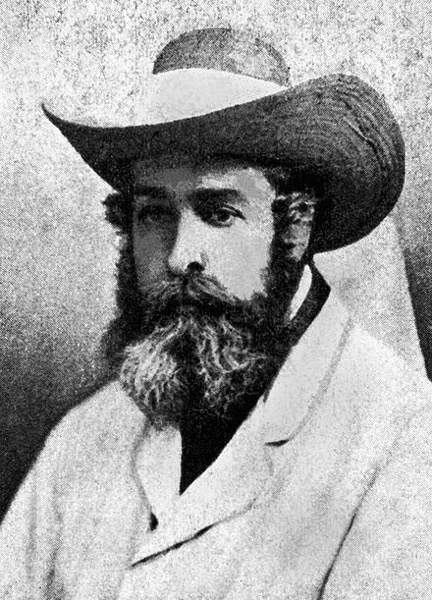
Lunsford Richardson II (1854–1919; Wikipedia entry here) is a name not many people know today. But his product is a world-famous brand. Here’s an article from the latest edition of the official North Carolina magazine, OurState.com. His original name – Richardson’s Croup and Pneumonia Cure Salve – was too long for the small jar, so he gave the honour to his brother in law, Dr. Joshua Vick.
Richardson’s son Jacob Henry Smith Richardson (1885– 1972) was a successful salesman for the firm, and he is said to have been "proud of his Scotch-Irish heritage” (source here). The Richardson-Vicks Collection is held at Greensboro Historical Museum.
Lunsford was a renowned advocate of African-American rights, borne out in October 1944 by the WW2 liberty ship S.S. Lunsford Richardson being named after him with a plaque affixed stating it had been at the "special request of the leading Negro citizens of North Carolina to honor the memory of a white friend." 71-year-old Watson Law, a Black friend of the Richardsons, was present at the official launch event at Brunswick, Georgia. Henry's attitudes seem to have been similar:
... Richardson was proud of his Scotch-Irish heritage and considered the South more "American" than other regions whose populations included more immigrants. He named North Carolina's racial heritage as one of its assets in an article about how the state could survive the Depression and improve its economy. His correspondence and writings contain numerous references to his racial attitudes, including a letter to the South African Information Service comparing apartheid to segregation in the American South ...
The Richardsons were of course Presbyterians, very involved in First Presbyterian Church in the town. According to this 1980 source, the first Ulster-Scots settlers in the Greensboro area arrived in 1753, a direct 'church plant' from Nottingham Presbyterian Church in present-day Maryland. Rev David Caldwell (bio here) was one of the town's outstanding historical figures - today an Historical Centre stands in his memory.
NB: Lunsford Richardson I (1808–56) had been a Democratic Senator in the North Carolina State Legislature for a time around 1854. He owned a mill on Little River in Johnson County, which was at risk of collapsing during a flood on 14 July 1856. He tried to save it but was drowned, a tragedy witnessed by his wife and daughter, and some men who were trying in vain to rescue him. A general biography of the family is included in Makers of America; biographies of leading men of thought and action which is online here. It traces the Richardsons to England and Scotland; the Scotch-Irish element must have been intermingled through the generations. The same book says this:
… the men have proven themselves capable, combining the shrewdness of the Scotch and the wit of the Irish. For two hundred years and more, the Scotch-Irish race has been a potential and beneficent factor in the development of the American Republic. All things considered, it seems probable that the people of this race have given color, to a great extent, to the history of the United States ...










